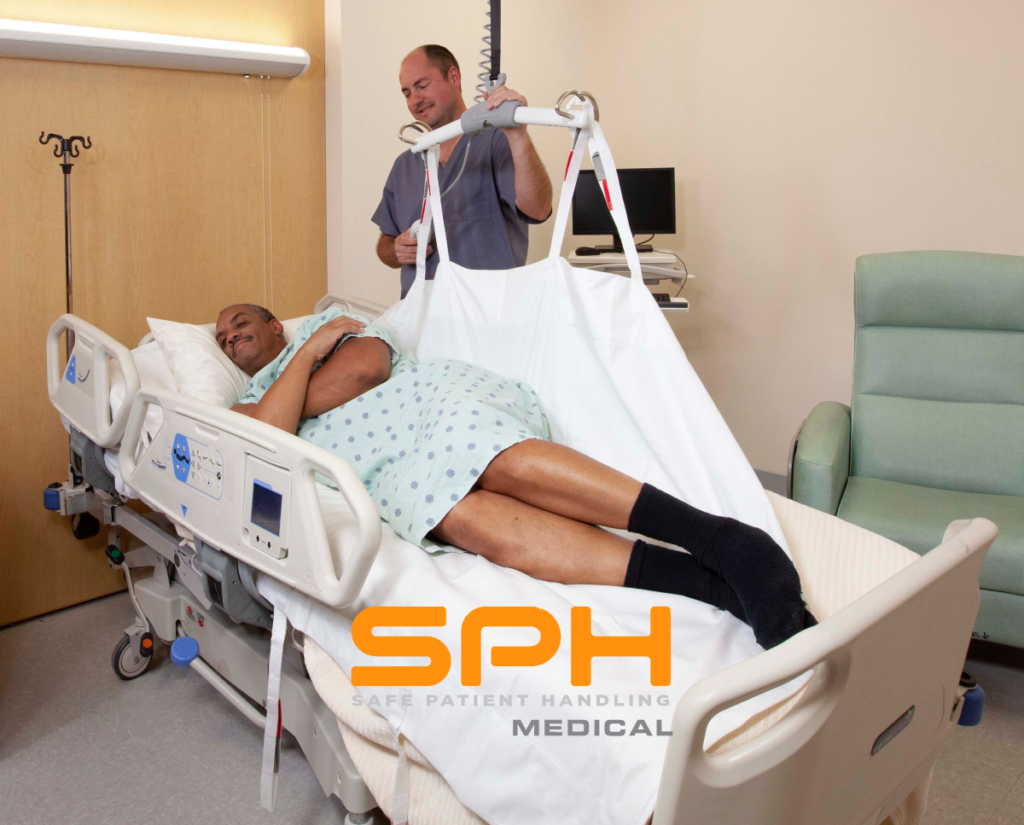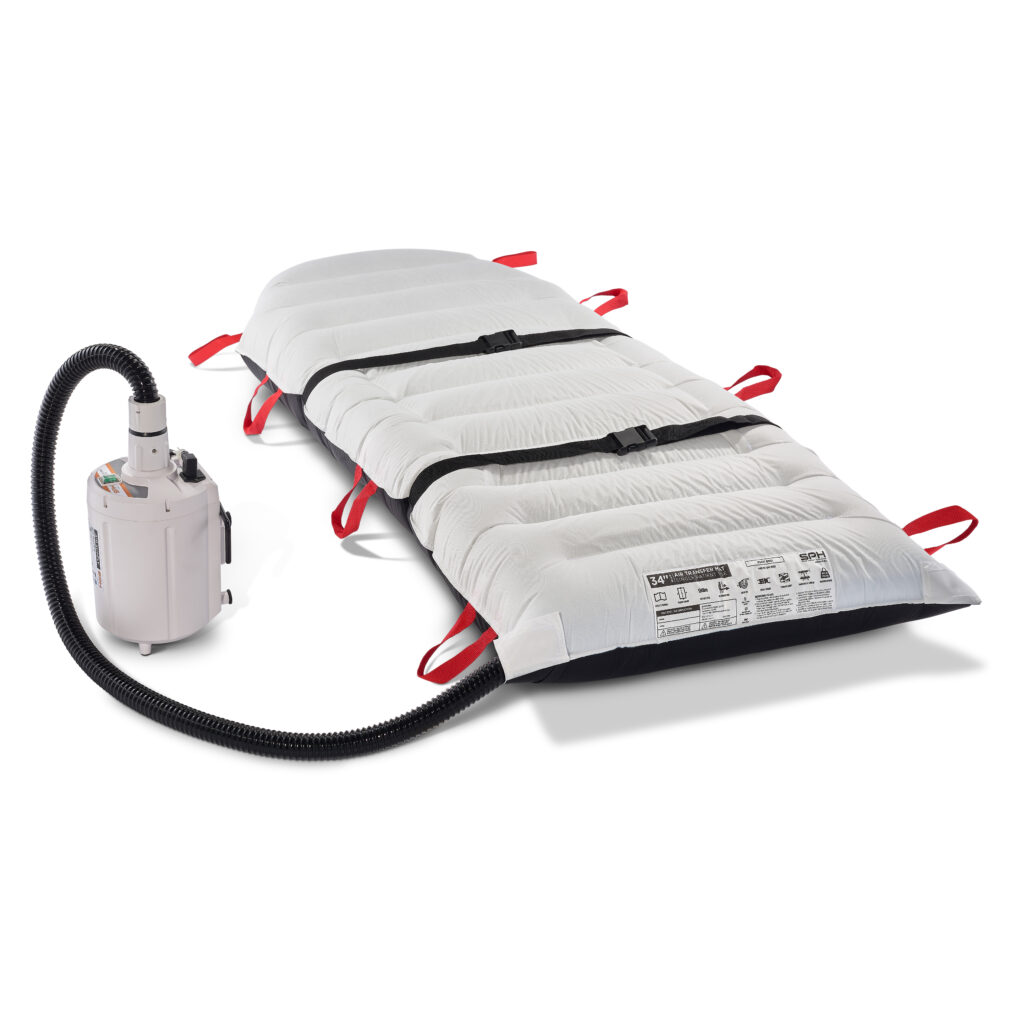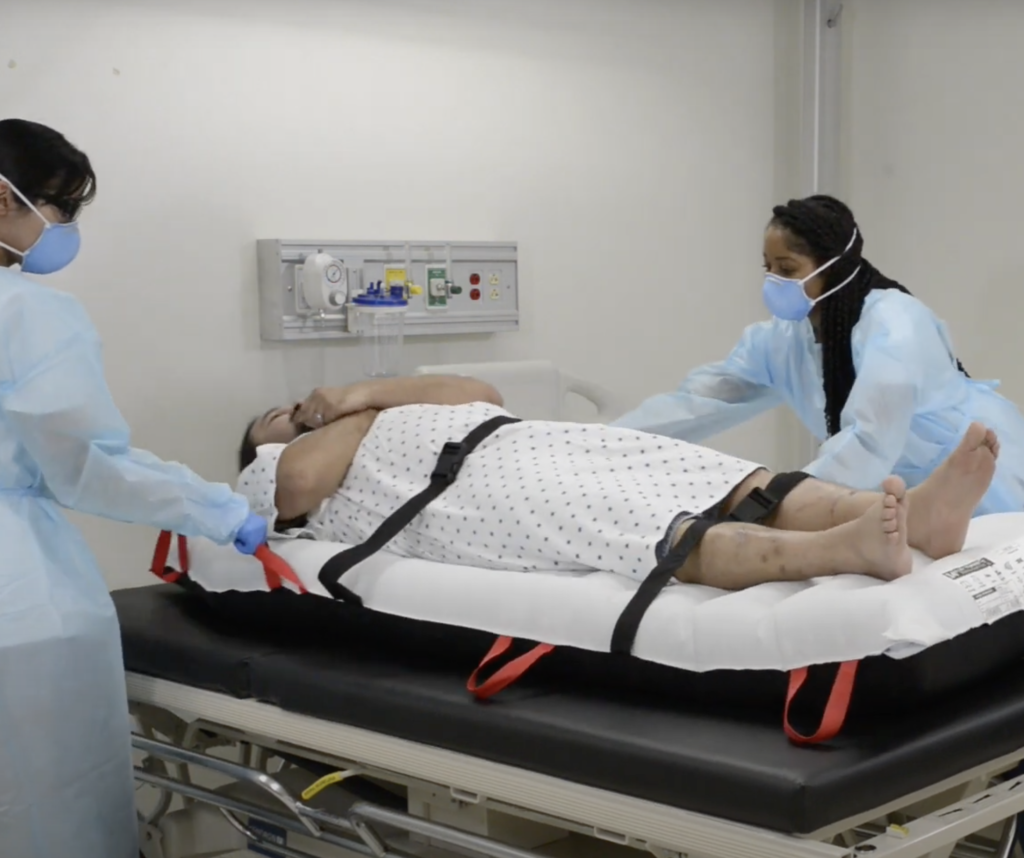Nursing is a very physically demanding job. Nurses spend most of each shift on their feet, walking for miles around the hospital each day. They are also expected to move patients around multiple times per day with little or no help. Moving patients from one location to another can cause injury and strain on nurses. This article focuses on preventing nurse injuries and the safety precautions and equipment used to perform safe patient handling.
There are high frequency patient handling tasks nurses have to perform that have traditionally involved manual pushing, pulling, or lifting. These tasks are:
- Lateral transfers
- Repositioning patients in bed
Lateral transfers
A lateral transfer is when a patient is moved from one surface to another. For example, it is not uncommon for a patient to need to be moved from a bed to a gurney, from the gurney into a CT machine or onto an operating room table, and then back onto the gurney and finally back into bed.
During these transfers, the patient is often unconscious or incapacitated and cannot assist in any way. An injured patient needs to be moved smoothly and gently to avoid further injury.
The old-fashioned ways of performing these transfers, such as a sliding board or pulling on a sheet underneath the patient, are very physically challenging and require the nurses’ to use poor ergonomics. In addition, while the guidelines suggest using four to eight nurses per transfer of an average adult human, often there is insufficient staff and two nurses have to do the job by themselves.
Repositioning patients in bed
Patients who are bed-bound need to be repositioned multiple times per day toavoid pressure sores. Patients also often slide down in the bed and need to be shifted back up (“boosting up in bed”). These repositioning efforts usually involve two nurses pulling on a sheet underneath the patient. Repositioning a patient in bed really describes a variety of in-bed positioning tasks that nurses perform to move patients. A nurse can engage in hundreds of repositioning tasks every shift, this is why there needs to be safe patient handling techniques coupled with assistive devices in place to help prevent nurse injuries.

Preventing Nurse Injuries and How a Nurse can get Hurt
Nurses are injured on the job at a rate (six per 100 workers) far exceeding that of all other industries combined (three per 100 workers). One study that analyzed workers’ compensation claims made by nurses found that repositioning injury was the most common type of nursing injury, costing over $29 million in direct medical costs to treat. That figure does not take into account the emotional and economic costs incurred by nurses having to find some other type of employment after suffering a permanent injury on the job.
Technology that can help nurses
A variety of different devices are available to make patient transfers easier for both the nurses and the patients. Some of these devices use mechanical lifts and utilize the SPH Medical breathable repositioning sheet to lift, turn and boost patients. Other solutions focus on reducing the friction between the patient and the surface, which makes it easier to move the patient. The clinical practice guidelines all strongly recommend the use of an air powered lateral transfer device when transferring a patient to and from an operating table.
One study randomly tested eight different types of assistive transfer devices and found that air-powered devices were rated the highest in terms of nurse comfort, ease of use, and patient safety.
Air-powered transfer systems, Help Preventing Nurse Injuries
The SPH Medical Air Powered Lateral Transfer System is a popular choice. It consists of an inflatable mat that is placed under the patient. When it is inflated, it gently cradles the patient while creating a thin layer of air under the patient, allowing the patient to be gently floated into their new position or location. Two nurses can easily transfer a patient with this device. It dramatically reduces the risk of injury to both the nurses and the patient.
An SPH air-powered transfer device can be left underneath a bed-bound patient and used throughout the day for repositioning and boosting up in bed procedures. They are rated for up to 1000 pounds and are compatible with all major air blower systems.
The SPH air-powered transfer devices are also radiolucent, meaning they can be left in place during imaging procedures. The patient can be placed on the transfer mat in the first bed they occupy after arriving at the hospital and it can then be used to ease every transfer and repositioning throughout the patient’s stay.
SPH air-powered transfer devices come in both reusable and single-patient types. The SPH Medical Single Patient Use Air Transfer Mattress can be dedicated to one patient throughout their stay and then discarded. This prevents the transfer of dangerous pathogens from patient to patient without having to engage in costly and time-consuming laundry, cleaning and disinfection procedures.
